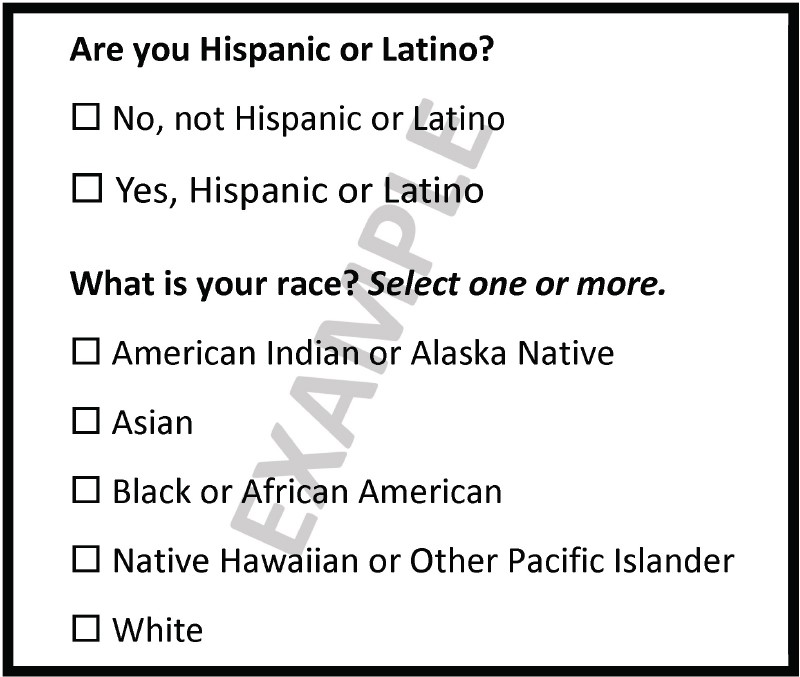1997 Standards for Maintaining, Collecting, and Presenting Federal Data on Race and Ethnicity
For data collected directly from respondents, the 1997 standards required two separate race and ethnicity questions, with the ethnicity question collected first before the race question.
- For the question “Are you Hispanic or Latino?”, the minimum reporting categories were:
1. Hispanic or Latino: A person of Cuban, Mexican, Puerto Rican, Cuban, South or Central American, or other Spanish culture or origin, regardless of race. The term, “Spanish origin,” can be used in addition to “Hispanic or Latino.”
2. Not Hispanic or Latino
The 1997 SPD 15 stated that Hispanic or Latino respondents may be of any race, and multiple responses to the ethnicity question were not permitted. Also, note that the 1997 SPD 15 listed “Cuban” two times.
- For the question and instructions “What is your race? < ‘Mark’ or ‘Select’ > one or more”, the minimum reporting categories were:
1. American Indian or Alaska Native: A person having origins in any of the original peoples of North and South America (including Central America), and who maintains tribal affiliation or community attachment.
2. Asian: A person having origins in any of the original peoples of the Far East, Southeast Asia, or the Indian subcontinent including, for example, Cambodia, China, India, Japan, Korea, Malaysia, Pakistan, the Philippine Islands, Thailand, and Vietnam.
3. Black or African American: A person having origins in any of the black racial groups of Africa. Terms such as “Haitian” or “Negro” can be used in addition to “Black or African American.”
4. Native Hawaiian or Other Pacific Islander: A person having origins in any of the original peoples of Hawaii, Guam, Samoa, or other Pacific Islands.
5. White: A person having origins in any of the original peoples of Europe, the Middle East, or North Africa.
The 1997 revision of SPD 15 gave respondents the opportunity to report multiple races.
1997 SPD 15 and Related Memos, Guidance, and Notices
Example Question Format
Based on the requirements in the 1997 standards, Figure 1 below illustrates how race and ethnicity questions typically appeared on Federal surveys and forms that collected the minimally required categories directly from individuals.
Figure 1. 1997 SPD 15’s Two-Questions Format for Self-Response
Page Last Revised - September 23, 2024
An official website of the U.S. Office of Management and Budget and the U.S. Census Bureau
Contact Us: Statistical_Directives@omb.eop.gov




